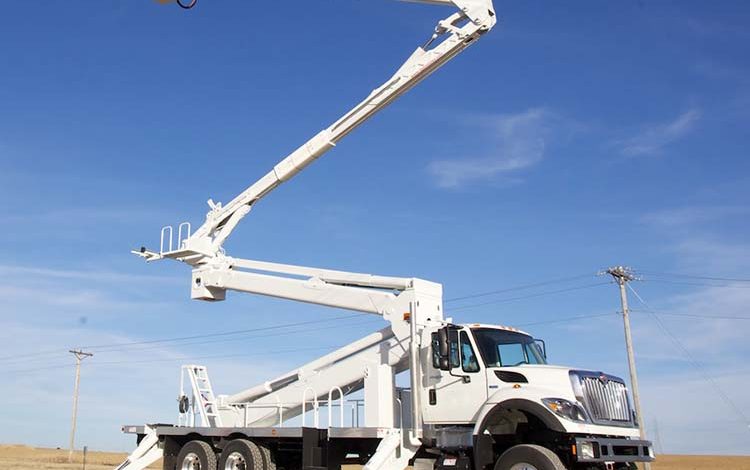Role of Technology in Enhancing Performance of Boom and Bucket Trucks

Boom trucks, also known as aerial work platforms, are essential equipment for various tasks. They combine a truck chassis with a hydraulic-powered boom to help workers reach elevated locations.
The insulated fiberglass coating on these vehicles’ booms and buckets helps safeguard against electrocution when working near electrical cabling. This feature boosts their demand in the telecommunications and construction industries.
Hydraulics
Hydraulics are an important technology in bucket trucks that perform aerial tasks such as maintenance and repair on electric lines. Cylinders on these truck-mounted lifts provide the power that raises buckets and platforms to heights up to 65 ft. and enable linemen to perform their jobs safely and efficiently.
Traditionally, bucket trucks are powered by diesel engines. The engine supplies the power that drives the truck and activates the hydraulic lift. However, this type of vehicle is expensive to operate because it constantly consumes fuel.
To overcome this issue, engineers have developed hybrid bucket trucks that utilize an electric motor to operate the hydraulic lift. This type of bucket truck is still powered by an internal combustion engine, but the engine only runs when the bucket is deployed. This allows the operator to save fuel and reduce operating expenses. It also requires fewer maintenance and replacement parts. This type of bucket truck is a cost-effective solution for telecommunications, forestry, and construction projects.
Electronics
Boom & Bucket trucks are increasingly used to perform a wide range of aerial tasks in the telecommunications, utility, signage, and construction industries. With their telescopic boom arms and platforms, these vehicles can reach high elevations to complete the job. Moreover, they can help workers avoid dangerous and time-consuming ladder work that can result in accidents.
A growing population and rapid urbanization worldwide are creating a need for efficient infrastructure facilities, thus driving growth in the boom truck market. Increasing public & private investments in infrastructure development projects and smart cities are further fueling the industry.
The global boom truck market is competitive, with several key players vying for share. Market players focus on product innovation, strategic partnerships, and acquisitions to gain a competitive edge. They also emphasize offering efficient after-sales services and customized solutions to maintain customer loyalty. Moreover, they adopt new technology to reduce operating costs and increase productivity. For example, hybrid bucket trucks are designed to save energy and improve performance by using an insulated fiberglass coating to prevent electricity flow through the boom lift.
Electrics
The global boom trucks market is growing owing to rising government & private sector construction projects. Additionally, increasing urbanization in several countries is supporting the demand for efficient infrastructure facilities & industrial refurbishments. This is creating a huge demand for truck cranes that can lift workers to perform elevated work tasks.
NV Energy’s hybrid bucket truck uses a standard diesel internal combustion engine to drive the vehicle on the road, but a mid-vehicle electric motor powers the hydraulic system when it is deployed. A dozen high-capacity battery packs provide power for the truck’s onboard systems. This reduces fuel consumption and eliminates exhaust emissions.
Insulated buckets are designed to keep electrical jobs safer. This is important because buckets & boom arms can conduct electricity and cause injury or death to employees. The non-insulated variety is suited for telecommunication, utility, tree trimming, sign installation and construction jobs that require access to higher areas. Blade Platforms offers a wide range of models to meet different height requirements.
Safety
Powered by hydraulics, bucket trucks have a boom arm and platform that lift workers to high, hard-to-reach areas. They are used for a variety of work, including power line maintenance and tree trimming. These truck-mounted aerial devices are also used to install and maintain data cables, television cables, telephone lines, road signs, and roofing.
Until recently, ANSI guidelines recommended that bucket trucks not operate on slopes greater than five degrees. This limit was designed to make technicians safer and prevent tip-overs. With Terex’s innovative SlopeMax, however, these powerful machines can safely climb slopes of up to ten degrees with modified platform tilt and cylinder control functions.
While standard bucket trucks use their internal engine to drive the hydraulics, hybrid models have an independent electric motor that eliminates reliance on diesel fuel. This helps reduce operating costs and environmental impact while maintaining performance. Regardless of the type of bucket truck, safety remains paramount in these machines.



